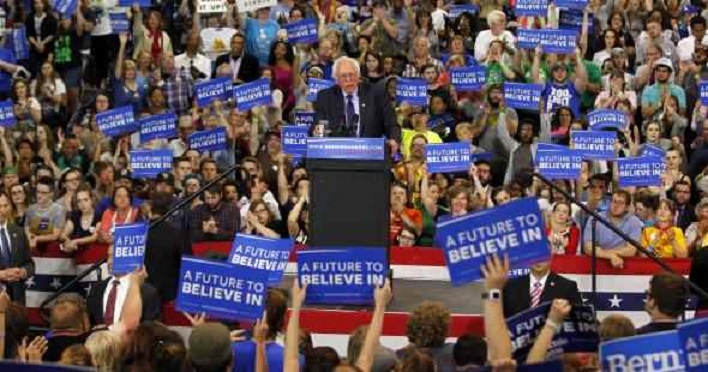
Analyst: Frustrated by system, voters turn to Sanders
Political correspondent James Hohmann has some very perceptive words about presidential candidate Bernie Sanders in today’s (May 11) Washington Post. The Democrat’s success at the polls, he says, “is really not about ideology. It’s about disaffection.”
“Americans, collectively, are not as angry as watching cable TV would lead you to believe,” Hohmann writes. “But many poorer, less-educated folks who have been left behind in the 21st century – the ones who have seen their wages stagnate, their opportunities for upward mobility disappear and their life expectancies shorten – are looking to disrupt a status quo that has not worked for them. […]
“And that’s the main reason why Bernie beat Hillary Clinton in yesterday’s West Virginia Democratic primary by 15.4 points. He carried every single county in the Mountaineer State, which by every metric has been left behind.
“Fewer than 1 in 5 Democratic primary voters in West Virginia identified as ‘very liberal,’ tying Oklahoma for the lowest in any of this year’s contests. Yet Sanders carried both states. In fact, Sanders won among self-identified moderate-to-conservative Democrats in each.
“So how did the septuagenarian socialist do it?” asks the journalist. “The bottom line is most people are not voting for Bernie because he is liberal. They are voting for him because they perceive his promised ‘political revolution’ as a challenge to the system that has failed them.
“‘West Virginia is a working-class state, and like many other states in this country, including Oregon, working people are hurting,’ Sanders said last night [May 10] at a rally in Salem, Ore. ‘And what the people of West Virginia said tonight, and I believe the people of Oregon will say next week, is that we need an economy that works for all of us, not just the 1 percent.’
“Only 26 percent of Democratic primary voters in West Virginia said they want the next president to continue Barack Obama’s policies. [Hillary] Clinton won that group by a more than 2-to-1 margin. Sanders won around two-thirds of voters who want the next president to pursue more liberal policies than Obama AND over half of voters who preferred more conservative policies. In Oklahoma, Sanders also won with those who rejected Obama’s policies as too liberal and those who said the president is too conservative.”
West Virginia will not be in play during the general election, and Clinton is still heading toward the Democratic nomination, Hohmann concedes, “but this sense of disaffection cannot be ignored by the elites in either party any longer.”
“It’s hard for the chattering class in D.C. — essentially, an island of prosperity — to appreciate how much parts of the country are still struggling from the after effects of the Great Recession, and the degree to which they were struggling to begin with,” he sums up.
“Last night [May 10]showed once again that white, working-class voters in economically-depressed areas are not ready for Hillary. Three in 10 Democratic primary voters said they or a family member is employed in the coal industry, and these voters favored Sanders by more than 24 points over Clinton.”
[Photo at top of analyst James Hohmann.]

